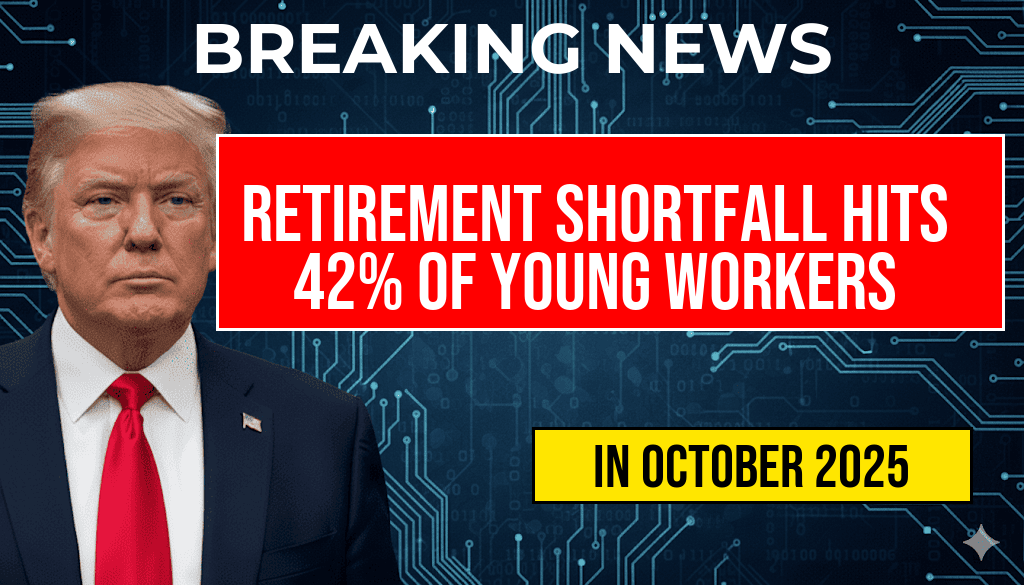Nearly half of younger American workers, specifically those aged 25 to 40, find themselves without any financial cushion to cover unexpected expenses or boost their retirement savings, according to a recent survey by the Employee Benefit Research Institute (EBRI). The findings reveal a concerning trend: a significant portion of this demographic is unprepared for financial shocks, which may jeopardize their long-term retirement security. Despite ongoing discussions about the importance of early savings, many younger individuals struggle to set aside even modest amounts, highlighting gaps in financial literacy, income stability, and access to retirement plans. As the retirement landscape shifts with economic volatility and inflation, experts warn that the current trajectory could leave millions financially vulnerable in their later years.
Understanding the Scope of the Retirement Savings Crisis
Key Findings from the Latest Survey
| Age Group | % with No Spare Cash | % Contributing to Retirement Savings | Average Retirement Savings |
|---|---|---|---|
| 25-34 | 42% | 68% | $14,000 |
| 35-44 | 38% | 72% | $35,000 |
The survey underscores a stark reality: while a majority of younger workers acknowledge the importance of retirement savings, a significant number lack the disposable income necessary to contribute effectively. For many, the challenge stems from stagnant wages, high living costs, and limited access to employer-sponsored plans. The data suggests that without targeted intervention, this demographic’s retirement prospects may diminish, potentially increasing reliance on social safety nets later in life.
Factors Contributing to the Shortfall
Economic Pressures and Income Disparities
- Wage stagnation: Many younger workers face flat or declining real incomes, constraining their ability to save.
- High living costs: Housing, healthcare, and student debt consume a significant portion of monthly income, leaving little room for savings.
- Lack of employer-sponsored plans: Smaller firms or gig economy roles often do not offer retirement benefits, forcing individuals to navigate savings independently.
Financial Literacy and Planning Gaps
Research indicates that a lack of financial literacy impedes effective retirement planning among younger demographics. Many are uncertain about how much to save or the benefits of compound interest, leading to inertia or misaligned priorities. Furthermore, complex investment options and changing regulatory environments can deter proactive engagement with retirement accounts.
The Broader Implications for the U.S. Economy
The growing shortfall in retirement savings among younger workers portends challenges for the broader economy. As this cohort ages, increased dependence on social safety nets and public assistance programs could strain government resources. Additionally, insufficient savings may result in reduced consumer spending, impacting economic growth and stability.
Potential Policy Responses
Experts suggest that expanding automatic enrollment in retirement plans, enhancing financial education, and incentivizing small savings through tax benefits could help bridge the gap. Some policymakers advocate for mandatory contributions for small employers and gig workers, aiming to level the playing field and boost overall savings rates.
Looking Ahead: Strategies to Mitigate the Shortfall
Empowering Younger Workers
- Financial education initiatives: Integrating comprehensive financial literacy into school curriculums and workplace programs can equip young adults with the knowledge to make informed decisions.
- Accessible retirement tools: Simplified investment platforms and personalized guidance can encourage participation and reduce barriers to saving.
- Employer engagement: Companies can implement automatic enrollment and matching contributions to foster a savings culture among employees.
Leveraging Technology and Innovation
Emerging fintech solutions are offering innovative ways to automate savings and tailor investment options to individual needs. These tools can help bridge the gap for those without access to traditional employer-sponsored plans, ensuring more equitable opportunities for retirement preparedness.
Conclusion
The current state of retirement savings among younger Americans reveals a critical vulnerability that could have lasting repercussions for individuals and the economy. Addressing this issue requires a multifaceted approach, combining policy reforms, enhanced financial education, and technological innovation. As the financial vortex continues to swirl, proactive measures are essential to ensure that future retirees are not left with empty pockets when their working days come to an end.
Frequently Asked Questions
What is the main issue highlighted in the article about retirement savings?
The article discusses a retirement savings shortfall where a significant portion of younger workers—specifically 42%—have no spare cash to contribute towards their retirement funds, leading to a potential financial vortex in their future.
Why are many younger workers lacking retirement savings?
Many younger workers face financial challenges such as low income, high debt levels, and insufficient financial literacy, which hinder their ability to save for retirement.
What are the potential consequences of a retirement savings shortfall?
A retirement savings shortfall can lead to financial insecurity in later life, increased reliance on social security, and the need to work longer or reduce lifestyle expectations during retirement.
How can younger workers address their retirement savings gap?
To address the savings gap, younger workers should consider starting to save early, take advantage of employer retirement plans, and seek financial advice to develop effective saving strategies.
What role do employers and policymakers play in solving this issue?
Employers can implement automatic enrollment and matching contributions, while policymakers can create incentives and regulations to promote retirement savings among younger workers.










